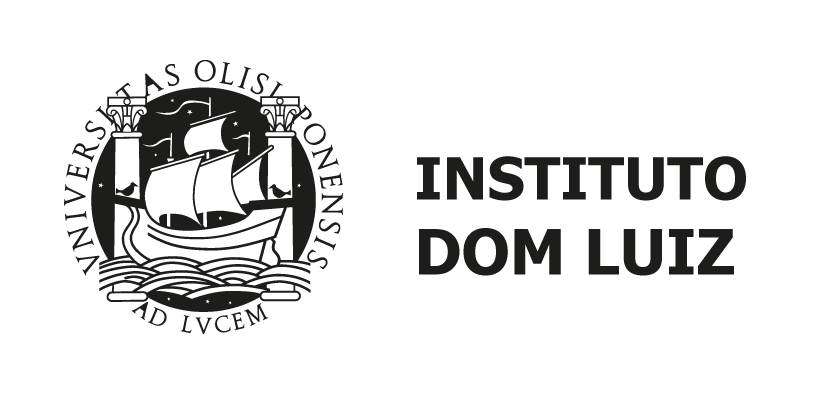IDL Annual Conference 2021
On April 6th and 7th, IDL will be holding its annual conference. Due to the current situation, it will be held via Zoom and broadcasted online on IDL's YouTube channel. The program includes two sessions with short presentations from new PhD students, and two sessions with presentations from new researchers, everyone who has joined IDL since the last annual conference in 2019.The meeting will also feature an invited talk by Michael Way (NASA/GISS).Here is the program (you can find the pdf document here):
6 April (Tue)
| 9:30-10:00 | Opening address by IDL director Ricardo Trigo |
| 10:00-11:00 | New PhD Students |
| Source-to-sink approach to dune evolution: insights from a small island system - Ana Pestana BastosEddy Generation and Transformation Processes in Oceanic Islands: Cabo Verde Case Study - Cláudio CardosoSeismic microzonation studies for Lisbon - Liliana OliveiraBuilding self-assessment: paving the way for new building energy performance indicators – Frederico Cardoso de MeloIchnology of Quaternary eolianites from the Iberian Peninsula: Paleoenvironmental and evolutionary paleobiological interpretations - Carlos Neto de CarvalhoA multi-sensor approach to the study of the urban heat island effect in cities: a comparative study - Alexandra HurducThe anatectic complexes of the Central Iberian Zone (Northern Portugal): geochemical and thermochronological constraints on their genesis, evolution, exhumation and the role of the associated shear zones - Beatriz FonsecaHAIB, Hybrid Artificial Intelligence control for Buildings Systems - Rafael Monge PalmaClimate and vegetation dynamics and its impact on present and future fire regimes in Brasil - Patrícia S. SilvaThe deep Lithospheric Structure from Wide-Angle Data – geodynamic implications, rifting and break-up - Susana GonçalvesAir-sea interface and carbon transport pathways in turbulent island wakes - Cátia Azevedo | |
| 11:00-11:15 | COFFEE BREAK |
| 11:15-12:15 | New Researchers |
| SEA METAL FLUX: Metal fluxes in the oceanic crust and formation of Volcanogenic Massive Sulfides in the Samail Ophiolite, Oman – Ana Patrícia JesusTrace fossils as environmental proxies: Case studies of the Lima and Mira estuaries, Portugal – Alina ShchepetkinaRivers in the Sky: What You Need to Know About Atmospheric Rivers – Alexandre RamosTsunami hazard in the NE Atlantic: Progress and challenges – Rachid Omira |
7 April (Wed)
| 9:30-10:30 | New Researchers |
| Paleomagnetism of speleothems – Elisa Sánchez MorenoDiversity and evolutionary history of Late Jurassic theropod dinosaurs of the Iberian Peninsula – Elisabete MalafaiaHydrological Modelling applied to Water Resources Management – Franciane Mendonça dos Santos | |
| 10:30-11:30 | New PhD Students |
| Numerical modelling of Tethyan-type ophiolite emplacement – Afonso GomesAssessment of the concurrence of heatwaves and droughts in Southeast Brazil under present and future climate change conditions: Impacts on public health – João L. GeirinhasHydrogeology of Portuguese sulphurous waters in distinct geostructural contexts: a multidisciplinary approach – Rita Martins CarvalhoUsing the morphology of insular shelves as a key for understanding the geological evolution of oceanic islands - the case study of Madeira Island – Viviana BelvisiDevelopment and Performance Maximization of Flexible Polymeric Films for Energy Storage in Sodium-Ion Batteries and Supercapacitors – Daniel Rúben SantosHarmful benthic dinoflagellates from Madeira Archipelago in a changing ocean: ecology, systematics and toxicity – Teresa Lopes Silva3D seismic structure and crust evolution in the south of Portugal – Osório de CavancudoInternal wave generation and its impact at the island shelf – Jesus ReisMethodology to sustainable management support of groundwater resources in regions under anthropogenic stress and climate change: Numerical Modelling vs Artificial Neural Networks – Joel ZeferinoGravitational, erosional, sedimentary and volcanic processes on the submarine environment of Flores and Corvo Islands (Azores Archipelago) – Simone InnocentiniA multi-scale coastal risk assessment due to Sea Level Rise on the Atlantic Coast of Mainland Portugal – Carolina Rocha | |
| 11:30-11:45 | COFFEE BREAK |
| 11:45-12:00 | IDL Prizes |
| 12:00-13:00 | Invited Talk by Michael Way (NASA – Goddard Institute for Space Studies) |
INVITED TALK
Earth's next supercontinent climate: how tectonics, rotation rate, & insolation affect climate
Abstract:We will explore two deep future Earth climate scenarios using a 3-D GCM when the next supercontinent phase is expected to take place. In Amasia (Americas + Asia; forming ~200 Myr from now) the supercontinent forms at high northerly latitudes with the main continents 'squished' north of the equator while an Antarctic subcontinent remains at the south pole. In Aurica (All continents combined ~250 Myr) a supercontinent forms at low latitudes akin to that of a Sturtian topography. We utilize the forward evolution of plate tectonics, solar luminosity, rotation rate, and different potential topographic heights in our study. The climates between these scenarios can be dramatic, with differences in mean surface temperatures approaching several degrees. In particular, the topographic height of the Amasia supercontinent plays a critical role in the climate. These results demonstrate that using simple aquaplanet or modern Earth land/sea masks is insufficient to explore the possible variance in theoretical modeling of extrasolar planetary atmospheres. Michael Way is a physical scientist at The NASA Goddard Institute for Space Studies in New York City. He was awarded his Physics PhD in Observational Cosmology in 1998 from UM St.Louis, and has also worked in Machine Learning, the history of Astronomy, and in recent years the modeling of planetary atmospheres using a three dimensional general circulation model known as ROCKE-3D. His most recently published work attempts to reconstruct Venus' climate history over its 4.5 billion year lifespan.

